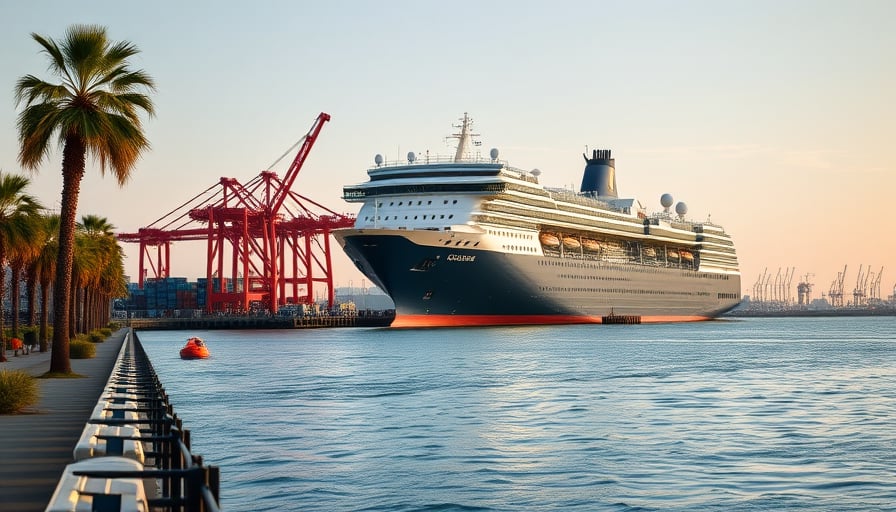Corporate Analysis of Carnival Corporation’s Recent Developments
Carnival Corporation, the world’s largest cruise operator, has announced a series of strategic actions that have generated a noticeable rally in its equity valuation. The company’s recent completion of a $1.25 billion notes offering, coupled with an analyst upgrade from Tigress Financial, signals a strengthening balance sheet and a positive market outlook. Simultaneously, Carnival’s expansion into the West Coast market for the 2027‑2028 season underscores continued growth ambitions within the cruise segment.
1. Capital Structure Optimization
- $1.25 billion notes offering: The company has successfully issued senior unsecured notes and will use the proceeds to redeem existing debt. By paying down higher‑cost debt, Carnival improves its leverage ratios, reduces interest expense, and enhances credit metrics such as the Debt/EBITDA and Net Debt/EBITDA ratios. These actions align with industry best practices for post‑pandemic recovery, where liquidity and debt management are paramount.
- Strategic debt reduction: The redemption of outstanding notes not only lowers the company’s cost of capital but also signals confidence to credit agencies, potentially improving future borrowing terms. In an environment where interest rates remain volatile, this proactive stance may provide a cushion against rising rates.
2. Analyst Upgrade and Investor Sentiment
- Tigress Financial’s price target increase to $40: The upgrade reflects an assessment that Carnival’s earnings prospects are improving, driven by robust demand for leisure travel and operational efficiencies. The new target represents a notable upside from current market prices, indicating that market participants are reassessing the company’s valuation multiples in the context of a recovering travel sector.
- Market reaction: The analyst upgrade has coincided with a sharp rise in the stock price, reflecting heightened investor confidence. Historical data shows that investors who entered positions five years ago have experienced significant gains, reinforcing the narrative of Carnival’s long‑term resilience.
3. Market Expansion – West Coast Season 2027‑2028
- New itineraries to Mexico, Hawaii, and California: By introducing West Coast cruises, Carnival taps into a geographically diverse customer base and leverages the growing domestic travel demand. The expansion diversifies revenue streams and reduces dependence on Caribbean and trans‑Atlantic markets, which have historically been more sensitive to geopolitical and environmental disruptions.
- Competitive positioning: The addition of these routes enhances Carnival’s market share in a highly competitive industry that includes Royal Caribbean, Norwegian Cruise Line, and MSC Cruises. The West Coast initiative also positions the company favorably in the U.S. market, where domestic cruising is projected to grow faster than international itineraries in the next decade.
4. Broader Economic Context
- Tourism rebound: Global tourism is recovering from the pandemic downturn, and leisure spending is rebounding as disposable incomes rise in key markets. Carnival’s focus on North American and Mexico itineraries aligns with this macro‑trend.
- Inflation and cost pressures: While commodity prices (fuel, food, and labor) remain a concern, Carnival’s scale allows for negotiated supplier contracts that mitigate some inflationary impact. The company’s recent cost‑management initiatives, combined with its financial restructuring, help sustain profitability.
- Interest rate environment: The company’s debt reduction strategy positions it to better handle potential future increases in borrowing costs. Maintaining a lower debt burden also improves credit rating prospects, which can translate into lower financing costs over time.
5. Conclusion
Carnival Corporation’s recent actions—strategic debt repayment, a favorable analyst upgrade, and expansion into the West Coast market—have collectively bolstered its financial health and competitive stance. The company’s ability to navigate post‑pandemic recovery, align its product offerings with shifting consumer preferences, and manage capital structure risks suggests a solid foundation for continued growth. As the cruise industry moves toward normalization, Carnival’s proactive measures appear well‑aligned with both sector‑specific dynamics and broader economic trends, reinforcing investor confidence and positioning the company for sustained future success.
